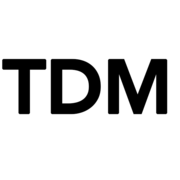

Theater, Dance & Media's first TDM Instructor Spotlight features Young Joo Lee, multimedia artist and Harvard College Fellow in Media Practice! Learn more about her work at https://youngjoolee.net/.
What’s been your most memorable experience in TDM or at Harvard?
There are so many things that I cannot possibly write all of them here. I loved visiting MassMoca for a field trip in Fall 2018. Many of the students had never visited this museum before. I think it was a great opportunity to see contemporary art, including Laurie Anderson’s memorable VR installation pieces and James Turrell’s perception-bending installation works.
Teaching in TDM was such a great opportunity for me explore the possibilities of merging animation, immersive media and performance together with the students. Visiting the Immersive Visualization Lab at the Department of Earth and Planetary Sciences and Derek Bok learning lab were important for my teaching. These are some of the few classrooms at Harvard where people from different departments and areas of interest can meet, learn and experiment. Some of my classes took place there, with the help of the fantastic staffs and directors of these labs. In addition, the supportive and welcoming environment in TDM definitely made my two years in Cambridge more enjoyable place to work.
What do you do as an artist outside of TDM?
I spend most of my time making and researching in my studio or visiting specific locations I am interested in. I just finished working on a collaborative performance piece, Threnos, with the Slovenian conductor/director Karmina Silec, poet Dora Malech, composer Jacob Cooper and Sidra Bell Dance company. Karmina audited my class while she was a Radcliffe fellow. In the same year, Sidra Bell was an artist-in-residence at Harvard Dance Center, so we all found each other at Harvard. For the project, I researched on the history of slaughterhouses and meat factories around the world as well as the changes in the relationship between human and animal. I was particularly interested in the loss of rituals in the process of mechanization and industrialization. I created animated videos for the performance based on my findings. Unfortunately, the premiere of the show was postponed to July due to COVID-19, but I can’t wait to see all the pieces coming together.
In February, I participated in a group show Effaced Faces in Seoul. The show was about the roles of women in the history of wars. I work often with artists and curators in Seoul, even though I left Seoul 11 years ago. I will be participating in another group show in August in Seoul, which will be exploring the theme of artists as anthropologists.
Recently, I finished an interactive Virtual Reality work which takes place at the US-Mexico border. The intention of this project was to create a cumulative collective painting/writing on the virtual border wall. I was planning to install this project at Farkas Hall, and I hope I can still share this work with Harvard community when the situation improves.
Right now, I am working on a film and an animation project. The film is kind of a sci-fi film that deals with commercialization of human body using regeneration technology. The animation project is a story of a woman who works in a corporate environment, in which the majority of the workers’ intelligence is enhanced by inserting computer chip into their brains. These two projects are still in its infancy. I am excited to work on these projects during this self-isolation time.
What are some underlying themes in your artistic work?
My work investigates how an individual’s identity, value and belief systems are shaped by family, society and natural and man-made environment. In my recent body of works, I focus particularly on the issues of cultural colonialism, alienation, and assimilation processes resulting from immigration and discrimination on the basis of sexual, racial and cultural identities. I study mythologies, religions, cultural and scientific theories in order to understand these subjects from different times in history. The narratives I create derive from the blending of these references with the observations of my personal experiences as a woman, a migrant, an Asian and a South Korean.